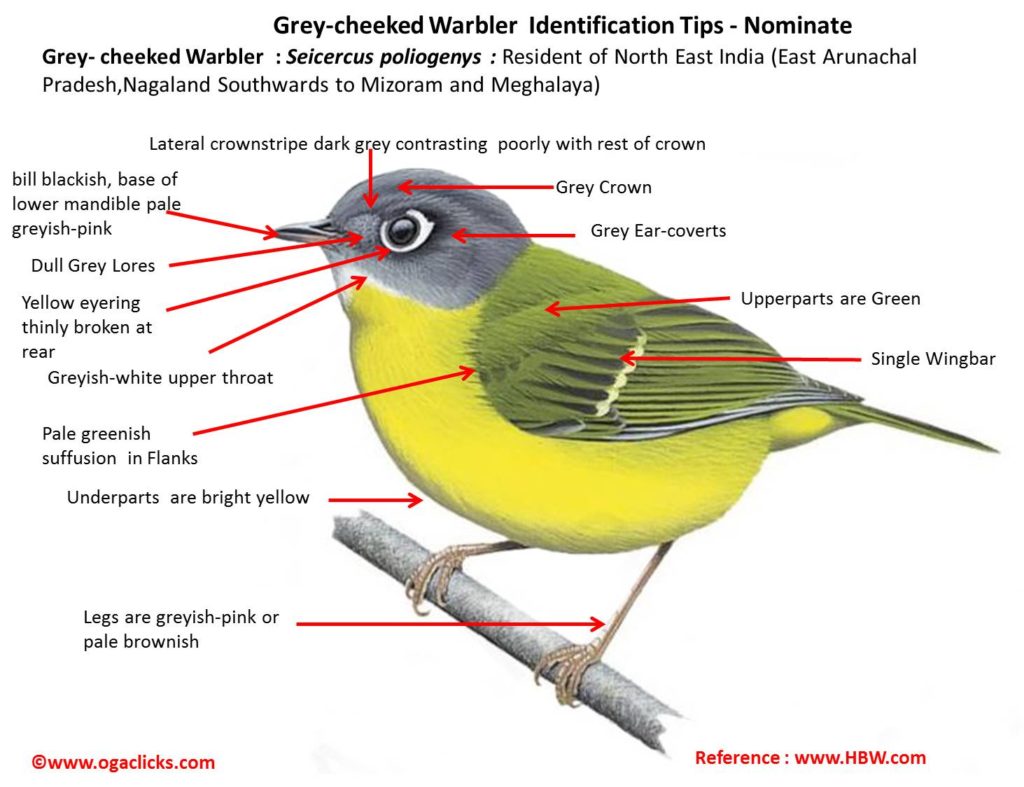Grey-cheecked Warbler

Grey-Cheeked Warbler Seicercus poliogenys
Etymology:
- Seicercus : Greek word sei-to shake; kerkos- tail
- Poliogenys : Greek word polios-grey ; genus cheek
Distribution in India: Resident of Eastern Himalayas and hills of North East India.
Description:Size of 10–11 cm. It has dull grey crown, nape, ear-coverts and lateral margin of throat, lores are dull grey with some whitish admixed. The lateral crownstripe is dark grey, contrasting rather poorly with rest of crown/nape. The broad white eyering is broken anteriorly above eye. The upperparts are green; upperwing and tail are brown-grey with green feather edges, whitish or pale yellowish tips of greater upperwing-coverts forming distinct pale wingbar. It has prominent white wedges on inner webs of three outermost pairs of rectrices. It is bright yellow below, variable amount of pale greenish on breast side and, often, flanks, and diffusely greyish-white upper throat. The iris is dark brown; bill is blackish, base of lower mandible is pale greyish-pink; legs are greyish-pink or pale brownish. Both the sexes are similar in plumage, female on average smaller than male. The juvenile has almost unicoloured grey crown, slightly greenish forehead, and is brownish-yellow below, slightly paler on throat.
Habitat:It breeds in lush undergrowth in upper part of warm temperate broadleaf forest zone . It is found from 1700–2100 m,
Food habits: It eats Insects and their larvae.
Breeding habits:
They breed in Apr–Jun in Himalayas and Apr and May in Vietnam. The nest is a ball of moss and grass, lined with moss and moss roots, placed on ground. They lay a clutch of usually 4 eggs. The incubation is done by both sexes.